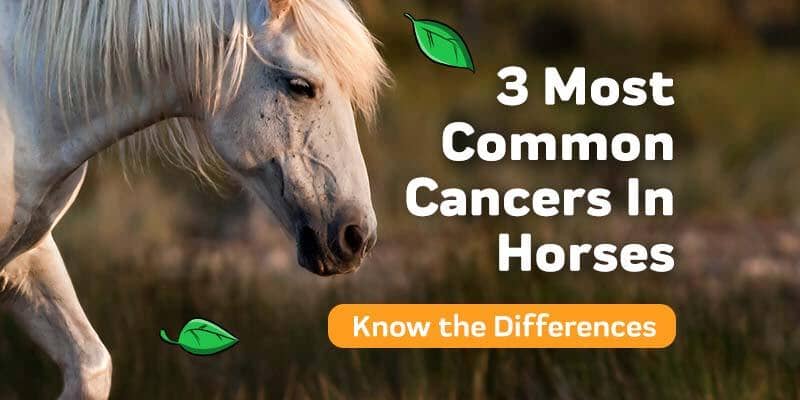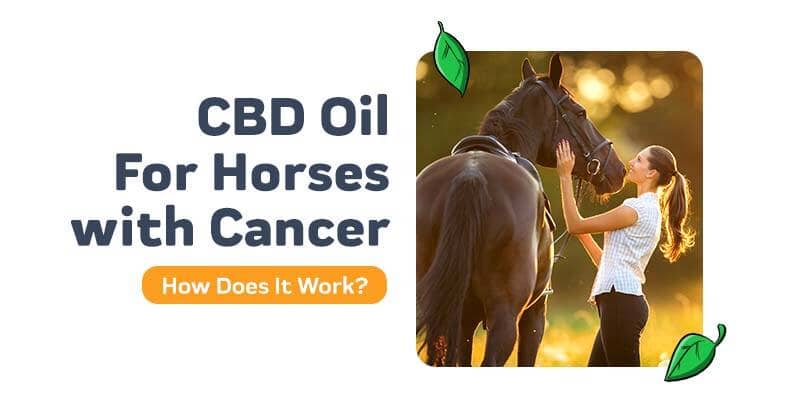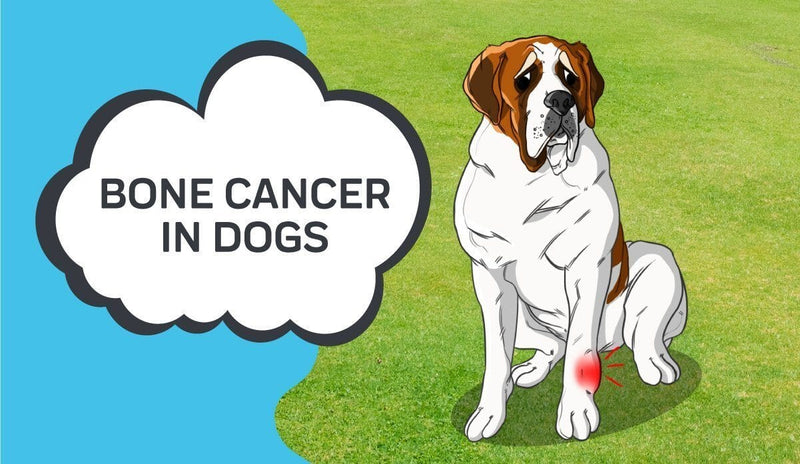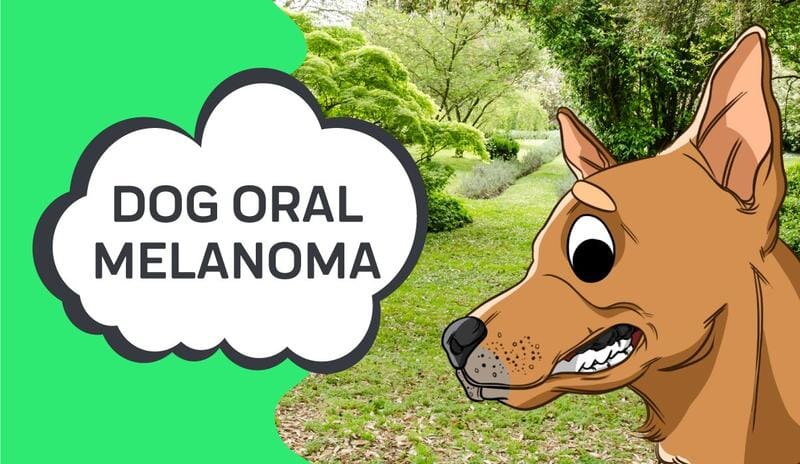Accounting for 80% of cancers seen in horses, the three most common forms of cancer that affect our equine friends all happen to be skin cancer.
Cancer is described as the uncontrolled growth of abnormal cells which were at one-time normal healthy cells. When their DNA is damaged, healthy cells can start dividing without restriction. Many times, this only results in a benign tumor, which is often considered harmless. However, DNA damage can cause a cell to turn malignant right away. As well, benign tumors in horses have the habit of turning malignant in the body when left untreated.
While often seen as less severe, skin cancer cells can still become metastatic tumors that creep into other organs and other parts of the body. Like other cancers, skin tumors are found along the blood vessels that steal resources from healthy cells. Treatment options for them include conventional cancer treatments like radiation therapy and surgical removal.
Let's take a closer look at 3 of the most common types of cancer found in horses.
Sarcoids
Sarcoids are inflammatory cells that develop into tiny groups and occur in different parts of the body. While this cancer appears in humans, it's much more likely to occur in a horse.
What Is It?
The most common type of skin tumors found in horses, accounting for 40% of all equine cancer, equine Sarcoids show little care for who it targets, affecting all breeds, ages, and sexes equally.

Caused by the bovine papillomavirus (BPV), interestingly enough, a horse’s genetics will play into their susceptibility to this virus. This is likely one of the reasons these usually non-painful and non-itchy bumps come back after treatment.
Research has still not fully determined whether Sarcoid tumors are contagious — while more research is needed, it's appearing likely not. However, some livery yards will not register Sarcoid-affected horses due to fears of transmission.
Types And Symptoms
There are six different types of Sarcoids, with each having its own unique symptoms and appearance.
Occult Sarcoids
-
Flat, gray, hairless, and circular in shape
-
Small nodules between 2-5mm in diameter
-
Commonly seen on the face, nose, armpit, inside thigh, and genital areas
-
Can look similar to rub marks/burns and skin conditions like Ringworm, Alopecia Areata, Pemphigus Foliaceus, and Dermal or epidermal Nevus
Verrucous Sarcoids
-
Wart-like or scaly appearance
-
Hair loss
-
Gray with potential nodules or surface ulcerations
-
Can occur anywhere on the body but is rarely seen on the lower legs
-
Can look similar to severe rub marks/burns and skin conditions like Ringworm, Alopecia Areata, Pemphigus Foliaceus, and keloids.
Nodular Sarcoids
-
Firm, defined nodules under the skin between 2-5mm in diameter
-
Commonly gray and may ulcerate and bleed
-
Commonly seen in the groin area, sheath, and eyelids
-
Type A nodules don't attach to the skin, letting it moved freely over their surface
-
Type B nodules attach to the skin, making the skin resistant to moving
Fibroblastic Sarcoids
-
Fleshy, aggressively bleeds, pinkish proud flesh red appearance
-
Commonly seen on the lower legs, groin, and eyelids
-
Easily attracts flies
Mixed Sarcoids
-
Two or more types of Sarcoids present
-
May or may not appear in the same location together
Malevolent Sarcoids
-
Several nodules that bunch together
-
Forms tissue structure that looks like cords underneath the skin
-
May bleed
-
Most aggressive type
How Is It Diagnosed
The only way to 100% confirm Sarcoids is by performing a biopsy, however, this can be quite risky because Sarcoids can easily spread when they are lacerated. This is why, sometimes instead of performing them, your vet will instead run non-invasive blood tests to try to rule out whether there could be another reason for the lump. They may also consult a veterinary oncologist in severe and uncertain cases.
How Is It Treated
Because there are six different types of Sarcoids, what treatment looks like for this cancer can vary considerably.
Treatments include immune stimulant drugs, like the Bacillus Calmette Guerin (BCG) vaccine that can be injected into the tumor. These drugs help the immune system better destroy tumors and cancer cells in a horse's body.
Surgery through excision, cryosurgery (freezing), and complete removal through laser surgery are also possibilities.
Combining injectable chemotherapy drugs like Cisplatin with Electrochemotherapy (ECT) is becoming increasingly more popular because of its success rates. First, the chemotherapy drug is injected into the sarcoid tumors, then an electrical shock is applied that drives the drug deeper into the sarcoid cells.
Other times, a topical therapy like acyclovir cream is enough for stopping the spread of sarcoid cells in the body.
Melanomas
The most common form of skin cancer in humans, our equine friends struggle with this form of cancer as well.
What Is It?
Most commonly seen in grey horses, Arabians, Lipizzans, Percherons, and horses over the age of 15, melanomas are skin tumors that are caused by an abnormal growth of melanocytes.
One of the most common skin cancers in equines, most melanomas in horses aren't commonly caused by sun exposure and solar radiation like they are in humans.
Older grey horses see melanoma significantly more than other horses. However, the melanoma they develop is significantly less dangerous than it is in non-grey horses and is likely caused by genetics, not UV damage. As well, these tumors often appear in places, like under the tail, that don’t see a lot of light.
While often unsightly, melanoma tumors are usually not painful, nor do they cause issues with mobility or other functions.
Types And Symptoms
Generally appearing as black lumps near hairless areas like the eyes, mouth, under the tail, near the anus, and in the sheath of geldings, there are 4 types of melanomas with slight variations in appearance, symptoms, and who they target.
Melanocytic Nevi
-
Small nodules that can be any color and form anywhere on the body
-
Most common in young horses between 4 and 5 years old.
-
Usually, benign
Dermal Melanomas
-
Single or groups of nodules of various sizes are found under the tail and around the genitals
-
Most commonly affect geriatric gray horses
-
Usually benign, but can turn malignant over time
Dermal Melanomatosis
-
Appears as a large coalescing mass under the tail, around the anus, around the genitalia, or the parotid salivary gland.
-
Most commonly found in gray horses over the age of 15
-
Frequently malignant
Anaplastic melanoma
-
Found in non-gray horses 20 years and older
-
The rarest form of melanoma
-
Cancerous and fast-moving
-
Affects the organs
-
Often malignant and metastasizes to distant sites
How Is It Diagnosed
To determine if a horse has melanoma, a veterinarian can take a sample of the mass with a needle or biopsy. However, because melanoma is so distinctive on horses, a sample to confirm is often not needed, and appearance alone can be used.
How Is It Treated
There are several options when it comes to treating melanoma, including surgical removal, chemotherapy drugs, and histamine blockers like Cimetidine.
Recently, a vaccine has been developed that’s similar to the one created for canines with melanoma. While it is still largely in the trial phase, research has seen a lot of early success.
Surgical excision is a popular early treatment with high success rates, especially for younger youngers.
Squamous Cell Carcinoma
Caused by an overproduction of squamous cells in the epidermis and mucous membranes, squamous cell carcinoma is the last cancer on our list.
What Is It?
Occurring only in locations that contain squamous cells, squamous cell carcinoma is caused by exposure to carcinogens like sunburn. In fact, horses near the equator are at a higher risk of seeing this cancer.

However, like many forms of cancer, genetics plays a part, with research finding that lack of pigment in the eye and gene mutations greatly increases a horse's risk of developing this cancer. Horse owners should be adamant about providing shade for horses that are genetically predisposed to developing squamous cell carcinomas as such.
Age is another factor, with squamous cell carcinomas usually appearing in horses around 12 years of age and older.
Squamous cell carcinoma cancer commonly appears on the eyelids, in the whites of the eye, and on the genitals, in particular, on the penis and prepuce of male horses. It is very rare for this cancer to metastasize, and there is a 99% rate of survival if the cancer is found and treated early.
Even when the cancer has spread, which would most likely be to the nearby lymph nodes, causing enlarged lymph nodes, a combination of surgery and radiation treatment has shown to have high success rates.
Types And Symptoms
Squamous cell carcinoma is most commonly found on the skin, mouth, nose, and stomach of older male horses. A horse's breed does not appear to increase their risk of developing this cancer.
-
Ulcerative or proliferative masses
-
Sores
-
Bumps
-
Growths on the third eyelid
-
Difficulty breathing / respiratory distress
-
Lack of appetite / weight loss
-
Discharge from the eye
-
Bleeding from the penis
-
Difficulty urinating or defecating
How Is It Diagnosed
A biopsy of the tumor, blood work for organ health, and a full physical to check for tumors in any other spots are all commonly done when squamous cell carcinoma is suspected.
A chest radiograph may also be ordered to check for tumors that have metastasized to the lungs.
How Is It Treated
Radiation therapy has been deemed the best treatment for all forms of squamous cell cancer. However, when the tumors are in or close to the eye, radiation therapy is sometimes discouraged.
If cancer has not metastasized, surgical removal of the skin tumors is often considered a good option for treatment -- squamous cell carcinomas are locally invasive and slow to spread.
The chemotherapy drug Cisplatin is a popular option for treatment if complete surgical removal and radiation therapy aren't options.
Final Words On Skin Tumors In Horses
Like with the majority of cancers, when caught early, an early diagnosis most often translates into a good prognosis for most tumors. This is especially true for skin cancer tumors because they often start as benign tumors, that only become malignant tumors when left untreated for a long period of time.
Because most cancer seen in horses is skin-related, a few preventative steps can go a long way. Make sure your horse always has a way to get away from the sun and get some shade. Sunscreen and fly masks that feature UV protection are fantastic options to cut down on sun exposure. Then diets rich in beta-carotene are recommended for help in preventing skin cancer. And your horse will appreciate that one too since it means incorporating tasty snacks like carrots into their diet.
If your horse is currently in treatment for cancer and you want ways to additionally help them out, consider looking into CBD. CBD can significantly improve our horses' cancer treatment plans thanks to its diverse range of health benefits.
From supporting the immune system to stimulating healthy appetites to reducing pain, CBD can help with the symptoms of cancer in horses along with many of the side effects that stem from cancer treatments like chemotherapy.
CBD comes in many shapes and sizes, from pellets that can easily place in your horse's food to creams that can be applied topically to damaged skin. Even when cancer isn't a concern, CBD can help a horse get back on their feet. And this is the reason it's commonly used in other treatments, like ones for anxiety, epilepsy, and mobility.
While cancer is scary, horse owners have several great options at their disposal for helping their horses better fight the disease.

















